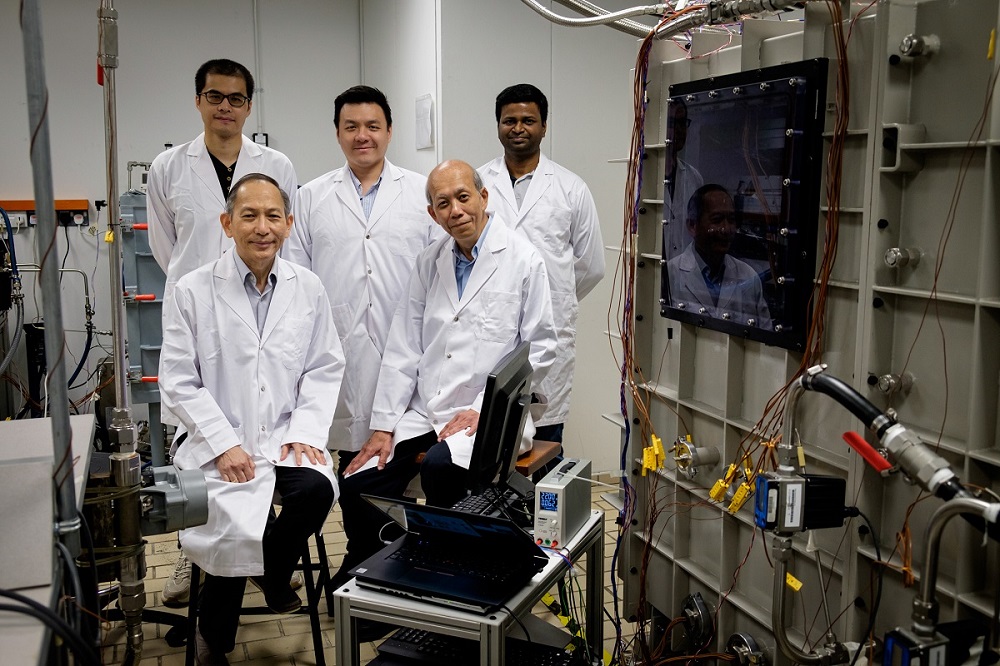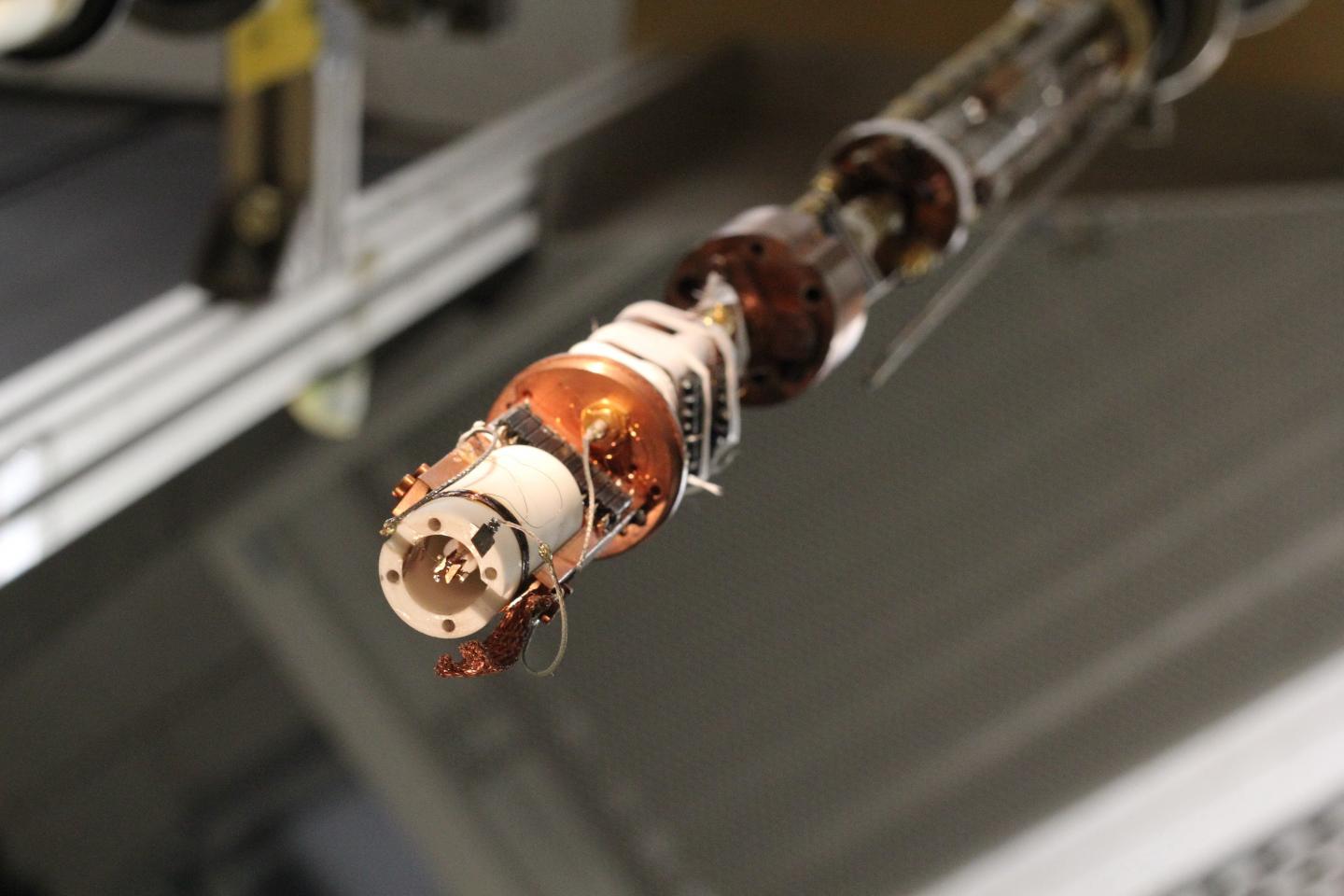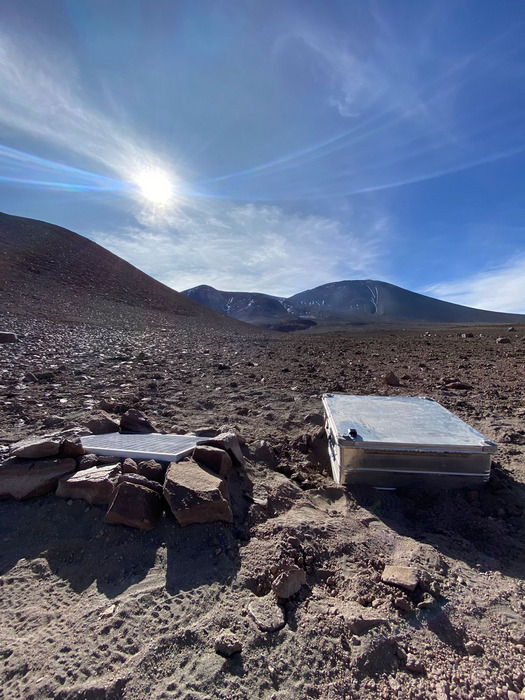
Image: (anti-clockwise from bottom left) Leader of the project NTU Associate Professor Wong Teck Neng, former Associate Professor Toh Kok Chuan, research fellow Ranjith Kandasamy, Asst Prof Ho Jin Yao, and research fellow Liu Pengfei, who developed the spray cooling system prototype for data centres (seen on the right).
A more sustainable and green method for cooling down servers in data centres has been developed, potentially reducing up to 26 per cent in both energy costs and carbon footprint.
Currently, data centres in Singapore account for 7 per cent of the nation’s total electricity consumption. With demand for cloud computing increasing, it is critical to find a sustainable solution that reduces energy consumption and carbon footprint of data centres.
In a data centre, the hottest component in a server is the CPU – central processing unit – which requires a dedicated heatsink that is air cooled, and the date centre also needs to be cooled by low temperature air-conditioning.
In comparison, this innovation developed by NTU scientists uses a special spray of non-conductive fluids to cool the CPU directly without a heatsink, and a closed-loop system to collect the fluids and to cool them in tropical ambient air temperature without the need of a chiller or air-conditioning.
It will also allow CPUs to run faster and perform better than today’s speeds which are limited by air cooling, since faster speeds will lead to higher temperatures.
As spray-cooling has a higher heat rejection capability, it is estimated to require 30 per cent lesser space than a conventional air-cooled data centre.
Original Article: Spray cooling lowers carbon footprint for data centres
More from: Nanyang Technological University
The Latest Updates from Bing News
Go deeper with Bing News on:
Cooling data centers
- EQS-News: Northern Data Group’s cutting-edge colocation provider, Ardent Data Centers, breaks ground on upgrade to Pittsburgh data center
EQS-News: Northern Data AG / Key word (s): Miscellaneous Northern Data Group’s cutting-edge colocation provider, Ardent Data Centers, breaks ground on upgrade to Pittsburgh data center 02.05.2024 / ...
- Cooling centers open today across the Valley
On May 1, cooling centers opened across the Valley in anticipation of the summer season. TechCrunch ...
- Moves by Vertiv and Schneider Electric Typify Data Centers' AI Power and Cooling Lift for NVIDIA GPUs
Recent power moves by market leaders Vertiv and Schneider Electric in the direction of NVIDIA and AI typify a larger trend conspicuously rippling through the data center ...
- Grizzle: Data center growth calls for more power
The explosive growth in data centers nationwide underscores the skyrocketing demand for cloud computing power transforming the economy while also sparking big worries about the electricity ...
- Why Castrol is dipping its toe into immersion cooling for data centers
The MegaPod, which from the outside resembles a humble shipping container, houses two 50kW Submer Megapod immersion tanks for immersion cooling, a type of liquid cooling which sees IT equipment ...
Go deeper with Bing News on:
Cooling down servers
- Slight cool down and calmer winds
Thursday morning is off to a mild start for central, eastern and southern New Mexico, but it is another chilly morning up north and in west-central NM. Skies are clear statewide, and we will see ...
- AI server power supplies and cooling behind Lite-On's strong showing
Lite-On Technology reported NT$28.776 billion (US$882.5 million) in revenue for the first quarter of 2024, marking a decrease of 22% from the previous quarter, and a 15.8% drop year-on-year.
- Vishay Intertechnology 600 V E Series Power MOSFET in Compact Top-Side Cooling PowerPAK® 8 x 8LR Delivers Industry’s Lowest RDS(ON)*Qg FOM
To provide higher efficiency and power density for telecom, industrial, and computing applications, Vishay Intertechnology, Inc. (NYSE: VSH) today introduced its first fourth-generation 600 V E Series ...
- Super Micro misses quarterly revenue estimates as inventory up, shares down 10%
(Reuters) -Artificial intelligence server maker Super Micro Computer reported third-quarter revenue below estimates on Tuesday, hurt by a shortage of some crucial components and questions over the ...
- UPDATE 1-Super Micro forecasts quarterly revenue above estimates as AI powers server demand
Super Micro Computer forecast fourth-quarter revenue above estimates on Tuesday as it expects continued demand for its servers used in artificial intelligence applications. Super Micro's in-house ...










